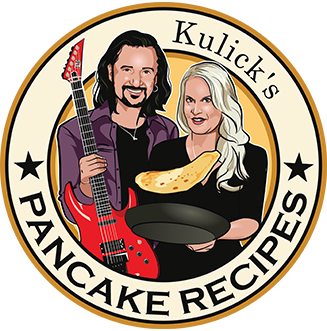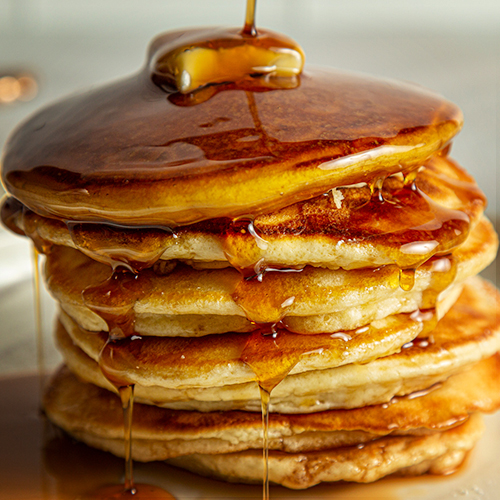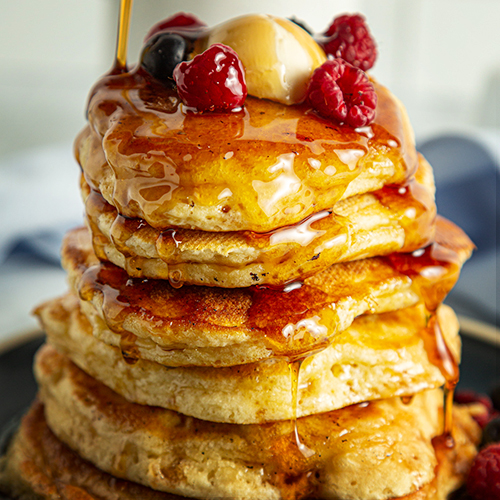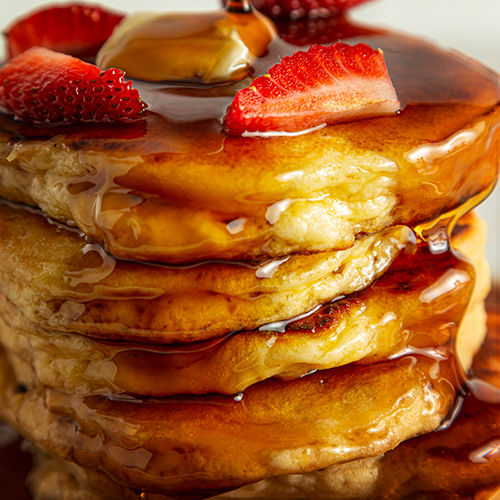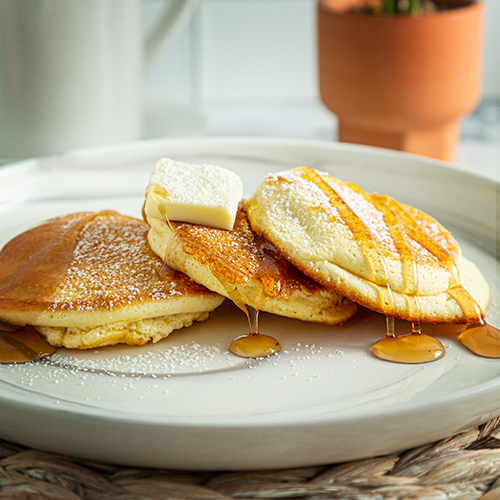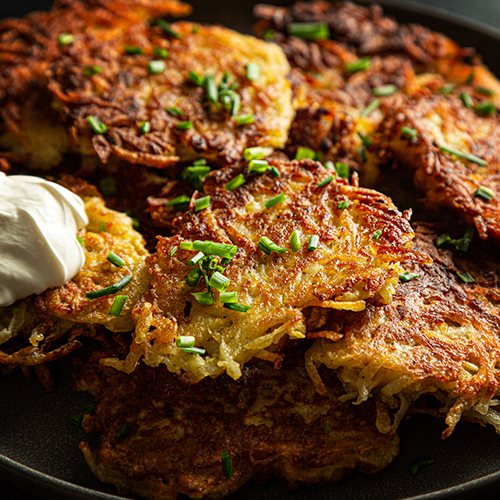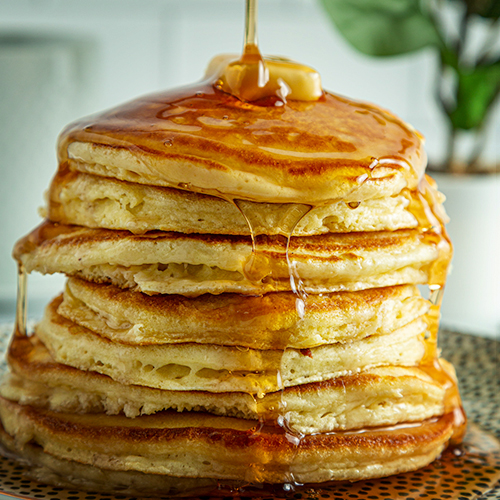35 Types of Syrup that Aren’t Maple
Maple syrup is perhaps the most popular and most commonly used, but there are many different types of syrups out there that you may not be aware of! This guide from Kulick’s Pancake Recipes looks at 35 different types of syrups, aside from maple syrup, along with how they’re made. How many of these have you tried?

Here are 35 different types of syrups aside from maple syrup!
- Acetomel: A syrup made from honey and vinegar with a sweet and sour taste
- Agave Syrup: A sweetener commercially produced from several species of agave
- Attar: A type of sweet syrup used in the preparation of Middle Eastern desserts
- Barley Malt Syrup: An unrefined sweetener that is processed by extraction from sprouted barley, containing about 65% maltose, 30% complex carbohydrates, and 3% protein
- Birch Syrup: A savory, mineral-flavored syrup made from the sap of birch trees that’s produced in nearly the same way as maple syrup
- Brown Rice Syrup: Derived by culturing cooked rice starch
- Chashni: The generic name in north Indian, Pakistani, Nepali, and Afghan languages for a sugary syrup
- Cheong: The name for various sweetened foods in Korean cuisine in the form of syrups, marmalades, and fruit preserves
- Cherry Smash: Fountain syrup made from cherry syrup along with a blend of other fruit flavors, which soda jerks mixed with carbonated water and phosphate
- Chocolate Syrup: A sweet, chocolate-flavored delight that is often used as a topping for desserts
- Cider Syrup: Commonly known as apple molasses, this is a popular type of fruit syrup.
- Corn Syrup: Created from the starch of corn and contains varying amounts of maltose and higher oligosaccharides
- Date Honey: A thick, dark brown, very sweet fruit syrup extracted from dates
- Evaporated Cane Juice: A form of sugar that is derived from sugar cane and is much less processed than table sugar
- Falernum: A syrup liqueur from the Caribbean, best known for its use in tropical drinks
- Fruit Syrup: Concentrated fruit juice used as a sweetener
- Glucose Syrup: Also commonly known as confectioner’s glucose, it’s a syrup made from the hydrolysis of starch.
- Golden Syrup: A thick, amber-colored form of inverted sugar syrup made by refining sugar cane or sugar beet juice into sugar or by treatment of a sugar solution with acid
- Grape Syrup: A condiment made with concentrated grape juice
- Grenandine: A commonly used non-alcoholic bar syrup characterized by a flavor that is both tart and sweet and a deep red color
- Honey Syrup: Created by stirring a heated mixture of honey and water until the honey dissolves
- Kuromitsu: A Japanese sugar syrup, literally “black honey,” that’s similar to molasses but thinner and milder
- Mizuame: A Japanese glucose syrup of subtle flavor, traditionally made from rice and malt
- Molasses: A thick, sweet syrup made from boiling sugar cane
- Orgeat Syrup: A sweet syrup made from almonds, sugar, and rose water or orange flower water
- Palm Syrup: A sweet syrup produced from the sap of a number of palms, made in the Canary Islands and coastal regions of South America
- Pekmez: A molasses-like syrup obtained after condensing juices of fruit must, especially grape
- Squash: A non-alcoholic concentrated syrup used in beverage-making
- Sugar Beet Syrup: A thick, dark syrup made by cooking and condensing the juice of sugar beets
- Sweet Sorghum Syrup: Syrup made from the green juice of the sorghum plant, a type of grass widely cultivated in America since the 1850s
- Syrup of Maidenhair: A syrup made from adiantum (maidenhair fern) leaves
- Treacle: A syrup made during the refining of sugar. The most common forms of treacle are golden syrup, a pale variety, and a darker variety known as black treacle.
- Vincotto: Thick syrup produced from the slow reduction of cooked grape must
- Yacón Syrup: A sweetening agent extracted from the tuberous roots of the yacón plant, indigenous to the Andes mountains
- Yeot: A Korean syrup made from steamed, lightly fermented rice
That’s a lot of different types of syrups! How many have you been able to try?
Use the following embed code to post this infographic on your website:
This page was last updated by Bruce Kulick and Lisa Lane Kulick
